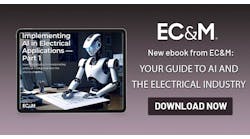Integrated building information modeling (BIM) is key for effective information management and can help contractors move into the revenue-generating areas of modular construction and aftermarket services. It also represents an opportunity for smaller construction businesses to compete against industry leaders, whose legacy enterprise resource planning (ERP) systems may not be able to keep up with the times.
Only Data Gets the Job Done
The objective of BIM is to provide better information management. However, the term can be misleading. It is not only applicable to buildings, but also used for industrial installations and infrastructure — giving project owners a structured set of data they can use to manage any built asset over its life cycle.
Data is the lifeblood of this process. Essential to the effectiveness of BIM is that the design software is data-driven rather than document-driven, which allows structured asset information to feed directly into the systems used to build and maintain it. This makes BIM different from simply a data modeling practice in a computer-aided design (CAD) system.
Where Traditional ERP Falls Short
For BIM to run smoothly, it’s key that asset data is structured and well organized — from proposal requests to contracts, design revisions and serial numbers on each piece of capital equipment. But if contractors are only running finance or human resources software from their ERP system, asset data has nowhere to go. As traditional ERP solutions have their roots in human resources and finance, this is a task too large.
Overcoming this challenge requires a system capable of gathering and retaining all the information generated during materials procurement, construction, commissioning, operation, and maintenance. This also includes data from subcontractors, material testing services, and equipment vendors, as well as lot and batch information and serial traceability where required.
Where Construction-Centric ERP Opens Doors to Growth
Since all information about a built asset is of business-critical importance for the project owner, construction-centric ERP software, which provides the right structure and format to this data, can give them the 360° view they need. However, the benefits of more structured information management go beyond ensuring construction businesses comply with government and project owner mandates associated with BIM.
For example, modern construction ERP can prevent change orders further down the line in a project, as it makes it easier to identify incompatibilities or conflicts between elements handled by different trades and disciplines. Easily accessed BIM data can also support contractors as they transition into off-site or modular construction, while opening the door to aftermarket services. Service-based contracts, such as facilities management, can provide a higher margin than initial construction projects and make up for dips in revenue contractors often experience during volatile economic conditions.
Tackling 3D Model Data
Construction in an age of BIM requires contractors to use 3D model data from tools such as Revit and integrate the asset data model into ERP. This takes the “as-designed asset structure” and pushes it through all stages of the project execution process, resulting in an “as-built and maintained” structure.
Construction ERP can do this without the need for manual data manipulation or use of spreadsheets. It can seamlessly interact with 3D model data to automate unified data model creation, which can be used during construction, commissioning, years of operation and maintenance, as well as eventual decommissioning and replacement. The key for construction businesses is to integrate effective software that is structured to allow the BIM data from their chosen design tools to flow seamlessly into physical asset management processes.
Build on BIM for 2020 and Beyond
BIM can provide construction project owners with all the information they need to effectively manage the life cycle of assets, but only if their ERP software is sophisticated enough to let data flow into physical asset management processes with ease.
Contractors running modern software applications can reap the benefits of BIM and challenge much larger competitors using more antiquated systems. But an inflexible solution that doesn’t extend beyond finance and HR can have the opposite effect — rendering valuable data worthless and leaving contractors in the dark.
Ingram, based in Oxfordshire, United Kingdom, is the global industry director for engineering, construction, and infrastructure at IFS. He can be reached on LinkedIn at www.linkedin.com/in/kenny-ingram-6b22167/.




